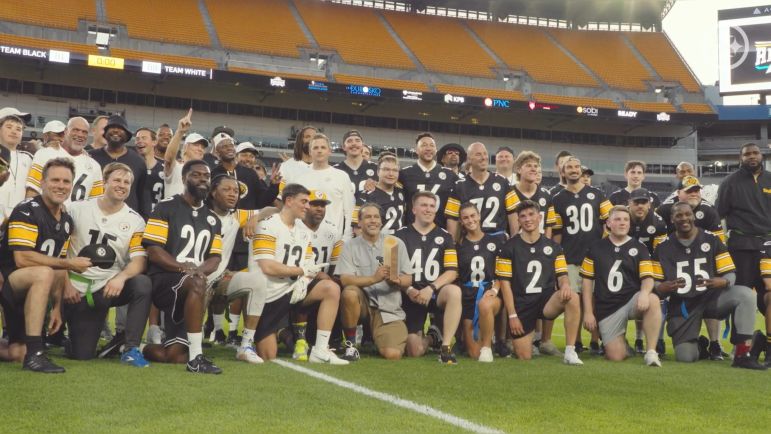“It’s a feeling of brotherhood”: Chris Hoke reflects on the bonds created by football in Pittsburgh

Most people start playing football in elementary school without necessarily aspiring to play professionally years later. From Pop Warner to high school to college to the NFL, very few players reach the professional level. Ohio State University estimates that 6.8 percent make it to college and only .023 percent make it to the NFL. But not every player has higher goals in mind. Young players join team sports (or are enrolled by their parents) because of the structure that team sports provide. You learn to work as a team and take direction from an authority figure, but perhaps most importantly, you become part of a community where you can make lifelong friends.
These bonds that form are present at all levels of football. Former Steelers DL Chris Hoke spoke about the brotherly aspect of football and said it was especially present in the Pittsburgh Steelers organization.
“The great thing about football — and I see this now especially with the Steelers — is that we all come from different backgrounds, come from different walks of life, and still come together,” Hoke said Saturday on BYU’s Cougar Sports on Apple Podcasts. “Maybe we were all in different places back then, but years later when you come together, there’s a sense of brotherhood… Maybe someone was in a different place at the time. They’re in a different situation, processing different things. But now, when you look back and you get together for events, get together for meetings, it’s like you’re a brother and like you’ve been a brother all along.”
Once you get past the high school level, where people live together regionally and have at least some of the same backgrounds, players can really come from all walks of life. A player like Antonio Brown was once homeless as a teenager and briefly ended up on the same college squad as JJ Watt, the son of a firefighter from suburban Wisconsin. Under normal circumstances, these people would never cross paths, but on the field, meritocracy reigns and backgrounds hardly matter.
The Steelers have always been a family organization with the Rooneys setting the tone. Tony Dungy talked about the expectations that come with stepping into the team’s facility. He recalled being called into Art Rooney’s office and being told, “You’re a Steeler now,” and all the expectations that come with that.
There is a very recent example of the kind of brotherhood that can emerge on the football field in Pittsburgh. Troy Polamalu created his “Resilience Bowl” this year for the Neighborhood Resilience Project to raise funds and awareness for traumatized communities. Polamalu gave the batting signal to many of his former teammates, and they came out in droves to support his event and the charitable work for the city of Pittsburgh.
You can scroll through some of the photos posted on the Steelers’ team website, but Ike Taylor, Arthur Moats, Heath Miller, Ben Roethlisberger, James Harrison, Hines Ward, Mike Tomlin, Jerome Bettis, Robert Golden and many other current and former Steelers came out to support them. It’s the perfect example of the brotherhood that was born in Pittsburgh and continues well beyond their years on the field.
Even on the current Steelers, the rookie offensive linemen have already talked about wanting to turn the OL unit into a brotherhood. They were drafted from different regions of the country and had no choice in which players would be on their final team, but many of those players will form bonds that will last a lifetime.



